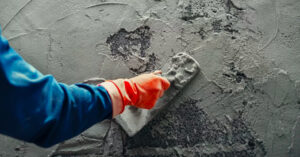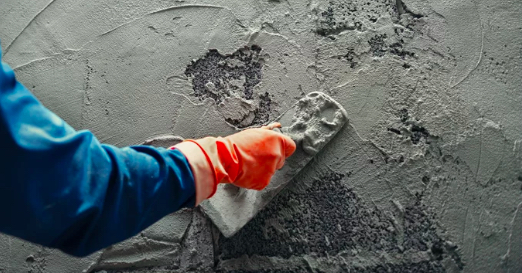 Concrete is a durable, long-lasting, and affordable material for residential use. To achieve the best results, homeowners should work with professional Concrete Contractors Dallas TX familiar with installing slabs of all sizes and types.
Concrete is a durable, long-lasting, and affordable material for residential use. To achieve the best results, homeowners should work with professional Concrete Contractors Dallas TX familiar with installing slabs of all sizes and types.
These professionals prepare the area for concrete installation by removing rocks, dirt, and debris. They also ensure the soil is properly compacted, tamped, and graded for drainage.
The preparation phase of a concrete installation is just as important as the pouring and finishing phases. The quality of the sand your contractor uses needs to be high, just like the concrete forms and steel support rods embedded in your structure. The chemistry of the concrete mix is also very important for getting the best outcome, which is why mixing the product in the right way is so critical.
Surface preparation is the technique that creates the ideal profile on a concrete surface for the application of topical products such as coatings, overlays and stains. A high percentage of material failure can be traced back to improper surface preparation, including delamination and the inability of the materials to bond with the substrate.
For this reason, it’s important that the correct surface preparation method is used on all concrete projects. The two mainstream ways that a concrete surface can be prepped are acid etching and grinding. Both techniques will level the surface and remove any contaminants from the concrete, making it ready to accept a new coating.
An acid etch is a chemical treatment that exposes the surface of the concrete to muriatic acid. This helps to remove oil, grease, wax and other contaminants that could interfere with the adhesion of new products to the concrete. After an acid etch, the concrete is rinsed with water to prevent any damage.
A grinding is a more aggressive form of surface preparation that involves using a handheld or walk-behind grinder with abrasives to remove any stubborn contaminants. For example, this may be necessary to remove carpet glues or tile adhesives. This type of concrete surface preparation will also remove high spots and level uneven surfaces.
Once the concrete has been properly prepared, it’s time to start pouring. It’s very important that the concrete is not allowed to dry out or get cold before pouring, as this can cause a number of problems. To avoid this, it’s important to use a concrete pump and a concrete mixer with the correct chemistry to ensure that the concrete is poured at just the right consistency.
Pouring
Concrete installation is a labor-intensive project that requires careful planning. First, the ground needs to be cleared and prepped for construction by removing all grass, rocks, trees, debris, or anything that could interfere with the pouring process. Next, the area must be leveled, and if necessary, a slope created for drainage purposes. Once the area is ready, a form must be constructed and filled with the appropriate concrete mixture. A professional contractor will know exactly which concrete mixture to use, as the consistency of the mixture is crucial for a successful finish.
After the concrete has been poured, it must be smoothed to remove any bumps and humps. This is done with a magnesium hand float, which can be used in long sweeping motions to create a smooth, even surface. During this step, it is important to keep water from standing on the surface of the concrete, as this can weaken the structure.
Once the concrete has been smoothed, it must be allowed to cure. This is a crucial process, and it takes several days for the concrete to reach full strength. During this time, it is imperative to keep the concrete covered or protected from direct sunlight, as too much sun exposure can damage or discolor the concrete.
Once the concrete has been cured, it is ready to be used for its intended purpose. The most common uses for concrete include patios, driveways, and foundations. However, concrete can also be used for sidewalks and walls. When selecting a concrete contractor, be sure to consider the experience and reputation of the company, as well as the cost. Many contractors will provide a quote for the entire job, including any dirt work or grading that may be required. These quotes will help you to determine if the contractor is a good fit for your project. Beware of contractors who do not offer this service, as they are likely to charge more for the job. They may also not have the equipment and specialized knowledge needed to complete the project successfully. This can lead to subpar concrete that is prone to cracking and other forms of deterioration.
Finishing
The finishing phase aims to create a durable and attractive concrete surface. This is also the stage when the concrete contractors can apply their creative skills and give your new slab a unique look. However, it is crucial to understand that the finishing process should only begin once the concrete has reached an appropriate stage of development. Premature finishing can lead to surface defects such as dusting, blisters or delamination of the concrete. Therefore, you need to trust your concrete contractor and work with them to ensure that the concrete is ready for this stage before beginning any finishing techniques.
Once the concrete has been poured, the contractors will use a screed or bull float to level the surface and remove any ridges that have formed. Depending on the style of finish you want, the contractors can then trowel the concrete to produce a smooth surface or apply a broom finish to make the surfaces slip resistant.
You can also choose to have your concrete exposed by using the shot-blasted finish which exposes the stone aggregates in the concrete for a unique texture and design element. Concrete can also be colored through mix-added pigments or staining after curing to provide an aesthetically pleasing appearance.
A film-forming sealer is another option that helps to protect your concrete and prevent moisture loss, but it is important to note that this product can interfere with the hydration of the concrete and could cause premature surface cracking. The hydration of the concrete is key to creating a strong and long-lasting structure, so your concrete contractor should always use a quality water retarder in conjunction with a concrete finish.
Once the concrete has been leveled and textured, you can now enjoy your new slab. Remember to let the concrete set for a minimum of 24 hours before commencing with any finishing. It may take longer for some projects, such as pools or driveways, so you should check with your concrete installation professional for more details.
Maintenance
Concrete is a useful construction material that can endure for many years with proper maintenance. But concrete in industrial plants and other facilities is continually subject to attack from both natural conditions and operational processes, all of which can cause it to deteriorate over time.
The most important step in maintaining the integrity of concrete is recognizing signs of damage and taking action immediately to repair them. Failure to do so can lead to costly repairs down the road, affecting productivity and potentially placing people or equipment at risk.
One of the earliest signs of concrete deterioration is water penetration into the surface, which manifests as a thin slick or outright puddle on the concrete. This puddle indicates that the concrete is saturated with water, which causes damage to the surface and leads to the formation of cracks.
To prevent moisture penetration, the concrete must be sealed with a commercial grade sealer. To keep your concrete looking good, it is recommended that you reseal the surface on a regular basis, depending on the amount of wear and tear. Sweep the concrete regularly to clear away surface dirt, and clean spills promptly, so they do not stain the concrete. In the case of oil-based spills, a quick application of WD-40 will often do the trick, and the concrete will quickly be ready to be washed.
Another common issue with concrete is delamination, which occurs when parts of the concrete separate from other layers to a significant degree but still remain attached to the greater structure. Often, you can identify delaminated areas by tapping on the concrete and listening to the hollow, echoey sound that results. If the underlying layers of the concrete are exposed, they can quickly decay and weaken the overall structure.
If you have any questions or concerns about your concrete, the experienced team at CMR can provide solutions and assistance using a variety of effective concrete repair restoration techniques. We understand that you want to protect your investment and maintain your facility as efficiently as possible, so we will work closely with you to diagnose and repair concrete problems using cost-effective methods.
